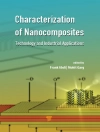Taking and analyzing images of materials’ microstructures is essential for quality control, choice and design of all kind of products. Today, the standard method still is to analyze 2D microscopy images. But, insight into the 3D geometry of the microstructure of materials and measuring its characteristics become more and more prerequisites in order to choose and design advanced materials according to desired product properties.
This first book on processing and analysis of 3D images of materials structures describes how to develop and apply efficient and versatile tools for geometric analysis and contains a detailed description of the basics of 3d image analysis.
Mục lục
PERFACE
INTRODUCTION
PRELIMINARIES
General Notation
Characteristics of Sets
Random Sets
Fourier Analysis
LATTICES, ADJACENCY OF LATTICE POINTS, AND IMAGES
Introduction
Point Lattices, Digitizations and Pixel Configurations
Adjacency and Euler Number
The Euler Number of Microstructure Constituents
Image Data
Rendering
IMAGE PROCESSING
Fourier Transform of an Image
Filtering
Segmentation
MEASUREMENT OF INTRINSIC VOLUMES AND RELATED QUANTITIES
Introduction
Intrinsic Volumes
Intrinsic Volume Densities
Directional Analysis
Distances Between Random Sets and Distance Distributions
SPECTRAL ANALYSIS
Introduction
Second-Order Characteristics of a Random Volume Measure
Correlations Between Random Structures
Second-Order Characteristics of Random Surfaces
Second-Order Characteristics of Random Point Fields
MODEL-BASED IMAGE ALANYSIS
Introduction, Motivation
Point Field Models
Macroscopically Homogeneous Systems of Non-overlapping Particles
Macroscopically Homogeneous Systems of Overlapping Particles
Macroscopically Homogeneous Fibre Systems
Tessellations
SIMULATION OF MATERIAL PROPERTIES
Introduction
Effective Conductivity of Polycrystals by Stochastic Homogenization
Computation of Effective Elastic Moduli of Porous Media by FEM Simulation
REFERENCES
INDEX
Giới thiệu về tác giả
Dr. Katja Schladitz is with Fraunhofer-Institut fur Techno- und Wirtschaftsmathematik in Kaiserslautern, Germany, where she coordinates the group working on analysis of 3D images and modelling of microstructures within the image processing department. She has been involved in a number of industrial and academic projects. Her research focuses on application of methods from stochastic geometry to image analysis and modelling materials microstructures.
Professor Joachim Ohser holds a Chair at University of Applied Sciences, Darmstadt, Germany, where he is teaching in the field of image processing. He has long experience with characterization and geometric modelling of microstructures. Since 1999 he heads the working group on quantitative microstructural analysis of the German Materials Society (DGM). His research focuses on stochastic and discrete geometry, image analysis and simulation of materials properties.












